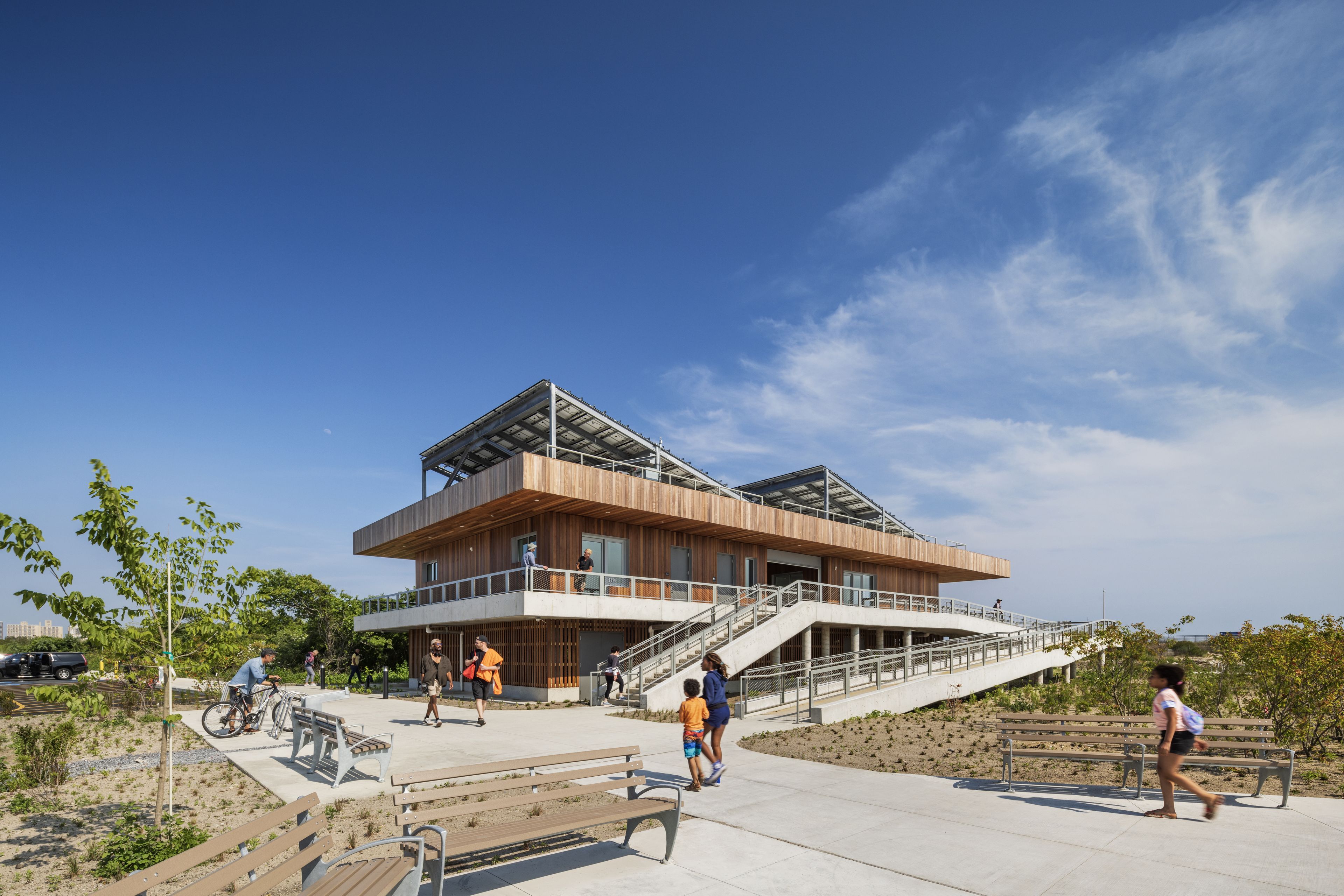
Frequent severe weather events mark our recent history, increasing the demand for resiliency and risk mitigation in building design and construction. Most industries, building typologies, and regions now require some type of proactive response to uncertain events and changing conditions.
Increasingly, DeSimone is partnering with clients challenged with the development of sites that come with a multitude of issues, requiring nuanced assessments, modeling, and design expertise to anticipate and mitigate potential future issues. Flood-resistant building techniques are highly sophisticated, multi-faceted strategies that involve complementary options: elevated structures, flood barriers, enhanced drainage, etc.


The construction industry creates resilient spaces to mitigate the effects of harmful events and difficult conditions that may emerge over time. Gradual, long-term changes in use and climate result in the same risks as sudden natural catastrophes. A building in risk, from structural failure and safety hazards to high costs and poor functionality, is a building that has failed to live up to its expectations.
In early design phases, we assess a physical asset’s quantitative risk when subjected to possible natural and man-made perils over time. We consider the frequency of hazards concurrently with the building’s vulnerabilities and the consequences of system failure. We estimate physical damage, loss of operations, costs for repair and replacement, and the possibility of casualties.
Critical structural design decisions made in the initial project phases determine a building’s capacity to prevent, withstand, and recover from future hazards. An integrated team, communicating effectively and continuously, has the capacity to introduce advanced techniques like performance-based design, early in the process. Similarly, our strategic material selection focuses on durable, resilient materials and construction techniques from the very beginning of the project.

An interdisciplinary team united in the shared objective of realizing design intent can anticipate, pivot, and respond to possible future risks without compromising project vision. In partnership with the architectural and MEP team, as well as other consultants, DeSimone designs the structure, façade and building envelope, and vertical transportation system to meet specific resiliency objectives while explicitly reflecting the goals of project stakeholders.
DeSimone’s resiliency engineering and design methodology addresses structural resilience and adaptation as complementary project objectives. We prioritize both rapid recovery and design agility as necessary building performance attributes. The underlying factor is structural integrity through the strategic selection of interdependent building systems.
Resilient systems selection must meet certain criteria. For instance, the measure for durability must encompass the avoidance, abatement, and removal of a threat. Building systems must also adapt to evolving risks that materialize with time: sea rise, material and structural degradation, increased moisture/flooding-related issues, etc.
During design, we establish performance requirements for your project, mitigation strategies for each hazard, standards for rapid resumption of use, and procedures for construction quality assurance reviews.
Consider our ongoing work in New York City with a world-renowned architect designing sustainable, mixed-income, new residential towers on a previous superfund site, adjacent to a flood-prone waterway. Our structural and façade design protect the towers from water infiltration, even if the adjacent water rises as much as five feet. Our extensive modeling clearly demonstrates that the enormous pressure of water on the building envelope, foundation, and structure will not compromise the building.


DeSimone has developed building resiliency solutions around the globe, including the following scenarios. Although this is just a short list of the potential hazards we’ve encountered during our decades of practice, this summary clearly illustrates the diversity of regional weather conditions our designs are created to anticipate and mitigate.
- High Velocity Hurricane Zones (HVHZ) in Florida
- Seismic activity in California
- High wind loads in New York
- Tsunamis in Hawaii
- Flooding in the United Kingdom
- Sand infiltration in the Middle East
Related Projects
See All Projects


About us
In an industry in which consolidation has become the norm, DeSimone stands apart from large engineering practices. The diversification of our services enables us to support a global clientele experiencing complex challenges. We remain independent so that we are able to provide bespoke and personal solutions, wherever your vision takes you.
Structural engineering is where we began, and it is still the core of our practice. But through the years, we have expanded the services we offer our clients, from façade and building envelope to vertical transportation to steel detailing and fabrication-ready modeling to advisory services.




)

